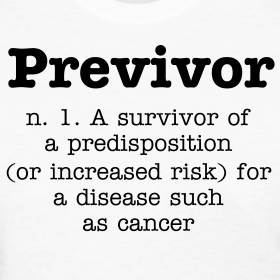A friend recently asked me a question about what happens after a cancer patient is done with treatment.
“My cousin finished radiation in the spring and is in remission, but she’s been having a tough time. Most of the family doesn’t want to talk about her cancer anymore; they’re just ready for things to go back to normal. Why do you think that 'The After' is so difficult?” she inquired.
There are several reasons why it can be tough for patients once treatment is over.
1. Being diagnosed with cancer causes you to experience a range of emotions from numbness to denial to anger. Once surgery and treatment start, you will need to focus all of your physical and emotional energy on getting through the journey. There’s rarely the luxury of time or strength to process all that is happening. It’s difficult enough to handle your essential responsibilities – in and out of the hospital. Once treatment is done, there are less loved ones around, fewer medical appointments, and a lot of time with your thoughts. The intense emotional reflection thus tends to happen once you're in remission.
2. Doctors won’t always inform you that you might not feel better once you’re done with treatment. Chemotherapy and radiation take a toll on your blood counts in a cumulative manner. By the time you’re finished, your counts may be the lowest that they’ve been, thereby causing increased fatigue, iron deficiency and risk of infection.
3. There’s the misperception that life can just go back to normal once you're done with treatment and in remission. That’s rarely the case. Physical side effects from treatment can linger for several years and make it difficult to return to your pre-cancer routine. There are constant reminders of what you endured. You have scars, your hair is gone, and you have the immune system of a newborn. Emotionally, you may feel confused, fearful of a recurrence, and depressed at how much your life, appearance and health have changed. You'll need time to adjust to several new normals in a short time period.
4. Your medical team will do its best to ensure that you cross the finish line into remission. But, once you’re cancer free and done with treatment, you'll go from having frequent contact with health care professionals and regular exams to sporadic visits and tests. You may feel as though you’ve lost your safety net when you’re told that you don’t need to see your doctor for months.
5. Following a cancer diagnosis, there’s an outpouring of support. The overwhelming majority of your loved ones will recognize that you will have to focus on yourself and your health. Likewise, those who are in a position to care for you will give of their own time and talents to do so. When you’re done with treatment, though, the people in your life will want everything to go back to normal. There will be the erroneous expectation that you’ll be able to handle all of your old responsibilities at the same pace and with the same stamina as before. Few will understand that you are still experiencing side effects that may include pain, sleep disturbances, digestive problems, menopause, chemo brain, fatigue, and nerve and muscle weakness. Well-intentioned comments, disinterest in hearing about your health, and unrealistic expectations might make you feel overwhelmed, misunderstood, weak or depressed.
6. There are many resources for patients during treatment, but there aren’t the same outlets for after treatment is done. Research reveals that 30% of breast cancer survivors experience depression after treatment and 20% experience body image issues. Talk to your doctor about options for counseling, medication, yoga, meditation, physical therapy and support groups before you finish treatment. Even if you don’t avail yourself of any of those resources, it’s worth having the referrals if and when you need them.
What are your thoughts on how to make post-treatment easier for survivors and loved ones?



